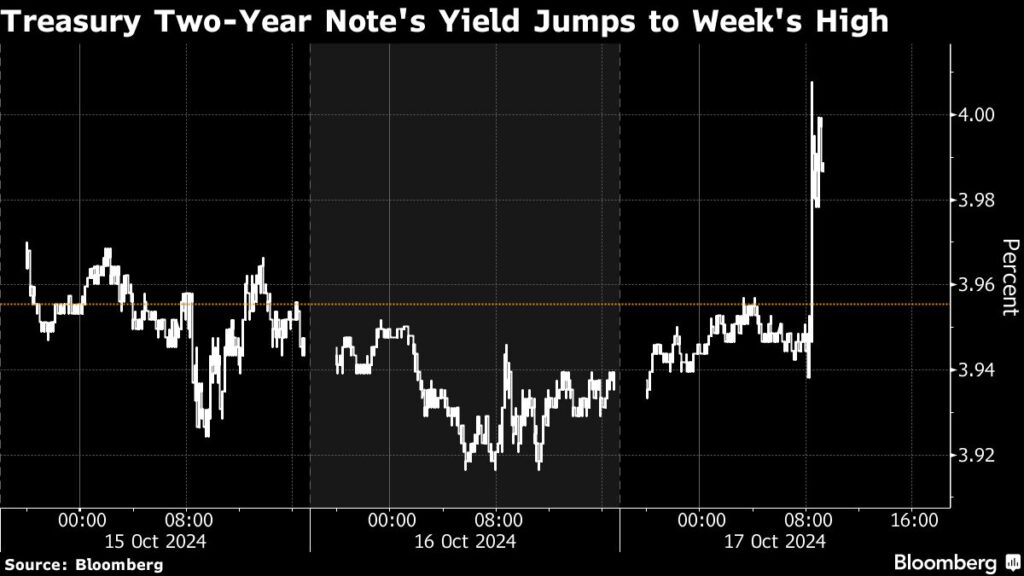In the wake of strong retail sales data from September, US government bonds experienced a notable slump, igniting skepticism regarding the Federal Reserve’s trajectory on interest rates. Treasury yields rose by as much as seven to ten basis points, with short maturities initially leading the selloff as traders revised their expectations for forthcoming rate cuts. Wall Street’s predictions that the Fed would lower rates in upcoming meetings seemed increasingly uncertain. Tom di Galoma, head of fixed income at Curvature Securities, remarked on the market’s reliance on weaker economic indicators, which had not materialized consistently, leading to some fading confidence in the future rate cuts despite a November reduction still appearing likely.
Market perceptions shifted after a government report indicated that retail sales for September surpassed estimates and previous months’ figures were revised upward. Additionally, a decrease in weekly initial jobless claims further diminished the bond market’s belief that an economic deceleration was imminent. The response in the Treasury market was significant, with yields on long maturities stabilizing following substantial block trades in Treasury futures, particularly involving the Ultra Bond contract. These trades, initially suggesting buyer interest at lower prices, were subsequently followed by a major trade that pushed the ultra-bond contract to new session lows, indicating a level of market tumult and steepening yield curves.
This recent downturn for Treasuries positions the bond market for its first monthly decline since April, as illustrated by a Bloomberg index. George Catrambone from DWS Americas noted that prospects of sustained growth without a recession could potentially lead to increased long-term yields. Additionally, market dynamics were being influenced by political factors, particularly the approaching US presidential election, which is less than three weeks away. Predictions favoring a Trump victory, attributed to his support for fiscal policies that could lead to widening deficits and inflation, have contributed to an uptick in market volatility.
As investors brace for significant market shifts, they are anticipating upcoming Treasury announcements regarding bond and note sales, scheduled for October 30, as well as the release of the October jobs report on November 1. The Fed’s policy decision on November 7 is also in focus, which will add to the market’s uncertainty. The heightened political landscape surrounding the upcoming election has exacerbated market jitters, with traders unwinding their positions in Treasury futures, signaling a cautious approach as they reduce exposure to both 5- and 10-year note contracts while the MOVE Index, which gauges expected Treasury market volatility, surged notably this week.
Additionally, the bond market has seen fluctuations tied to election speculation, with investors reflecting concerns over fiscal policy shifts that might come with a Trump administration. As a result, the volatility seen during this election cycle is expected to be pronounced, reflecting broader economic concerns and the potential for changes to the US fiscal landscape. The market’s apprehensions are further amplified by the specter of inflation and its impacts on interest rates, which will be heavily influenced by the decisions and outcomes associated with the election.
The nuanced interplay between economic data, Federal Reserve expectations, and political developments will continue to shape the Treasury market’s course in the lead-up to critical announcements and decisions. As uncertainty looms around both economic performance and the election outcome, investors remain vigilant amidst a shifting economic context, seeking to navigate the challenges posed by potential interest rate adjustments and evolving fiscal policies in the United States. Consequently, the stage is set for dynamic shifts in the Treasury market as these pivotal events unfold, making it a focal point for market participants in the months ahead.

